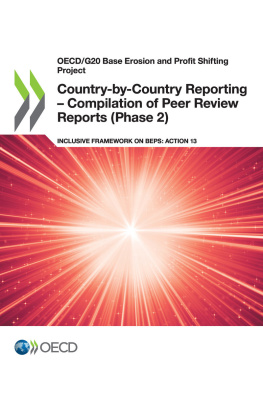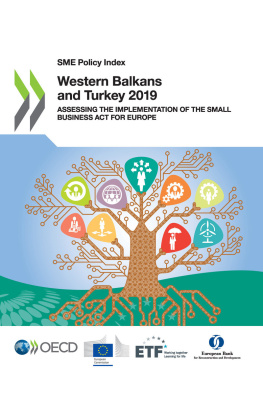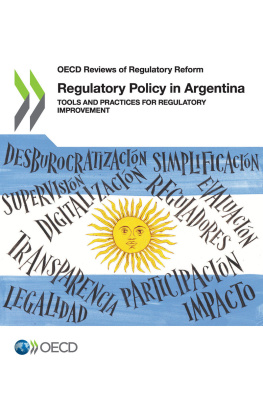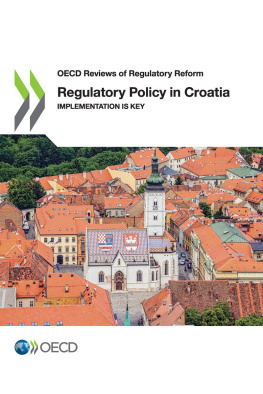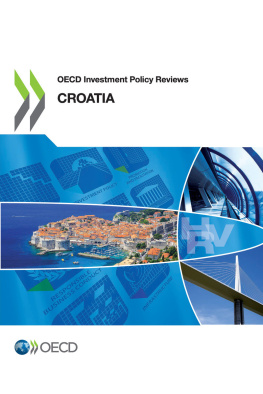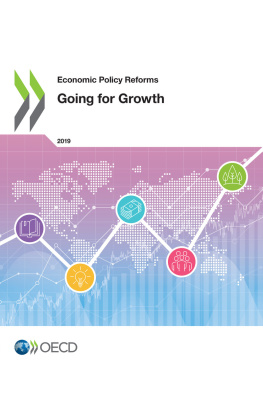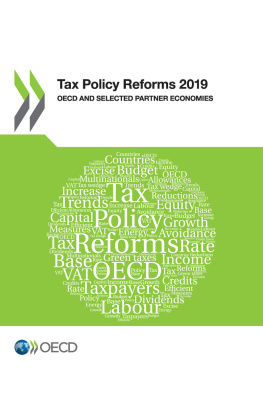OECD - A Policy Maker’s Guide to Privatisation
Here you can read online OECD - A Policy Maker’s Guide to Privatisation full text of the book (entire story) in english for free. Download pdf and epub, get meaning, cover and reviews about this ebook. year: 2019, publisher: OECD Publishing, genre: Politics. Description of the work, (preface) as well as reviews are available. Best literature library LitArk.com created for fans of good reading and offers a wide selection of genres:
Romance novel
Science fiction
Adventure
Detective
Science
History
Home and family
Prose
Art
Politics
Computer
Non-fiction
Religion
Business
Children
Humor
Choose a favorite category and find really read worthwhile books. Enjoy immersion in the world of imagination, feel the emotions of the characters or learn something new for yourself, make an fascinating discovery.
A Policy Maker’s Guide to Privatisation: summary, description and annotation
We offer to read an annotation, description, summary or preface (depends on what the author of the book "A Policy Maker’s Guide to Privatisation" wrote himself). If you haven't found the necessary information about the book — write in the comments, we will try to find it.
OECD: author's other books
Who wrote A Policy Maker’s Guide to Privatisation? Find out the surname, the name of the author of the book and a list of all author's works by series.
A Policy Maker’s Guide to Privatisation — read online for free the complete book (whole text) full work
Below is the text of the book, divided by pages. System saving the place of the last page read, allows you to conveniently read the book "A Policy Maker’s Guide to Privatisation" online for free, without having to search again every time where you left off. Put a bookmark, and you can go to the page where you finished reading at any time.
Font size:
Interval:
Bookmark:

OECD (2019), A Policy Maker's Guide to Privatisation , Corporate Governance, OECD Publishing, Paris.
https://doi.org/10.1787/ea4eff68-en
Globalisation, technological development and increased competition have changed the conditions for many state-owned enterprises (SOEs). As a consequence, the state as an owner has had to adapt its portfolio of companies over time reflecting also changing rationales for state ownership. The OECD does not take a position on whether or not the state should own enterprises, which should be dependent on a number of factors related to the national economy as well as domestic policy choices. However, experience shows that the SOE sector can either promote or hamper economic and social development. This depends on the extent to which SOEs operate in a sound regulatory and competition environment. It also depends on good governance the state acting as a professional and active owner plays a key role in this regard.
Privatisation is complex and challenging, and it needs to be done right. It requires adequate preparation and planning, as well as careful execution. With over 40 years of national experiences with privatisations across the OECD area and beyond, practitioners and policy makers can learn from each others experiences, pitfalls and successes.
Drawing on accumulated experiences and case examples, this Policy Makers Guide to Privatisation provides practical advice to decision-makers on the key stages of privatisation from start to finish. It addresses fundamental questions policy makers should ask themselves before embarking on the process; steps to take to prepare a sale; steps to take during the sale addressing key topics such as valuation and pricing; as well as what to expect post-privatisation. Newcomers to the process are likely to find it especially useful.
A number of countries are in the process of reforming the way in which they organise and manage their SOEs. They often take the internationally agreed OECD Guidelines on Corporate Governance of State-Owned Enterprises as a point of departure. The present Guide is an important complement to the existing consensus on state ownership practices expressed in the Guidelines. It underlines key tenants including good corporate governance, transparency, and integrity which are all key ingredients to successful privatisations.
The OECD Working Party on State Ownership and Privatisation Practices codifies best practice and monitors SOE-related developments and policy making, and it provides a forum where policy makers and practitioners can turn to for advice. An increasing number of countries participate in this forum and use OECD experiences as inspiration for their national reform processes and privatisations.
Government investments and divestments in the corporate sector happen all the time, so the question of efficiently privatising continues to impose itself. I invite the engagement of national policy makers with the Working Party, and I recommend this Guide as an introduction to our thinking on this important subject.

Lars Erik Fredriksson
Chair
Working Party on State-Ownership and Privatisation Practices
The rationale for developing A Policy Makers Guide to Privatisation is to support the implementation of the 2015 OECD Guidelines on Corporate Governance of State Owned Enterprises (OECD SOE Guidelines) and provide accompanying guidance specifically addressing best practices in privatisation. It responds to a request by the OECD Working Party on State Ownership and Privatisation Practices.
The Guide is informed by evidence gathering of recent experiences in privatisation and broadening of the ownership of SOEs and benefitted from the input of an informal task force of national experts on privatisation from Germany, Italy, Kazakhstan, Latvia, Norway, Sweden and the United Kingdom. It also draws on the conclusions of a Roundtable discussion entitled Privatising SOEs: Recent experiences, good practices and the road ahead held in March 2017, which brought together public officials, experts and OECD consultation partners, including the Business and Industry Advisory Committee (BIAC) and the Trade Union Advisory Committee (TUAC).
The Guide was authored by Sara Sultan Balbuena of the Corporate Governance and Corporate Finance Division in the OECD Directorate for Financial and Enterprise Affairs, with inputs from Alison McMeekin (Special section on anti-corruption and integrity in the privatisation process and Annex A). It also benefits from comments and inputs from Hans Christiansen, Korin Kane and Chung-a Park. The Guide was prepared for publication by Katrina Baker, Anne Nestour and Edward Smiley.
Policy makers and privatisation experts agree that it is critical to get privatisation right. A well-planned and executed transaction, backed by sound rationales, strong institutional and regulatory arrangements, good governance and integrity can have consequences on future divestment activity by enhancing investor confidence while gaining the support of stakeholders and the public. Drawing on the internationally agreed OECD Guidelines on Corporate Governance of State-Owned Enterprises and decades worth of national experience across both OECD and partner economies, this Policy Makers Guide to Privatisation provides practical advice to newcomers on key stages of the process from inception to post-privatisation. With global privatisation activity trending upwards, this Guide can support policy makers in their decision-making process in the years to come. The key findings are as follows:
Font size:
Interval:
Bookmark:
Similar books «A Policy Maker’s Guide to Privatisation»
Look at similar books to A Policy Maker’s Guide to Privatisation. We have selected literature similar in name and meaning in the hope of providing readers with more options to find new, interesting, not yet read works.
Discussion, reviews of the book A Policy Maker’s Guide to Privatisation and just readers' own opinions. Leave your comments, write what you think about the work, its meaning or the main characters. Specify what exactly you liked and what you didn't like, and why you think so.


